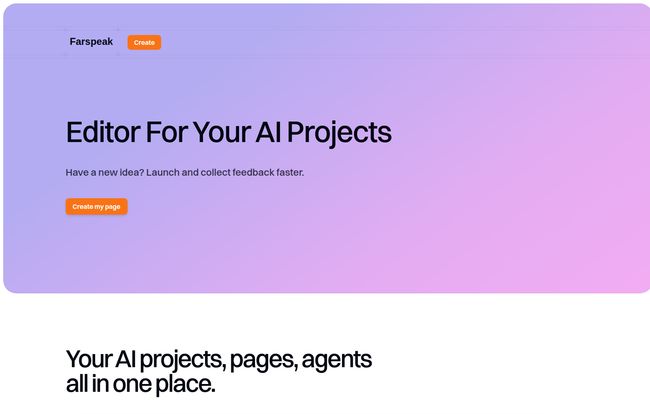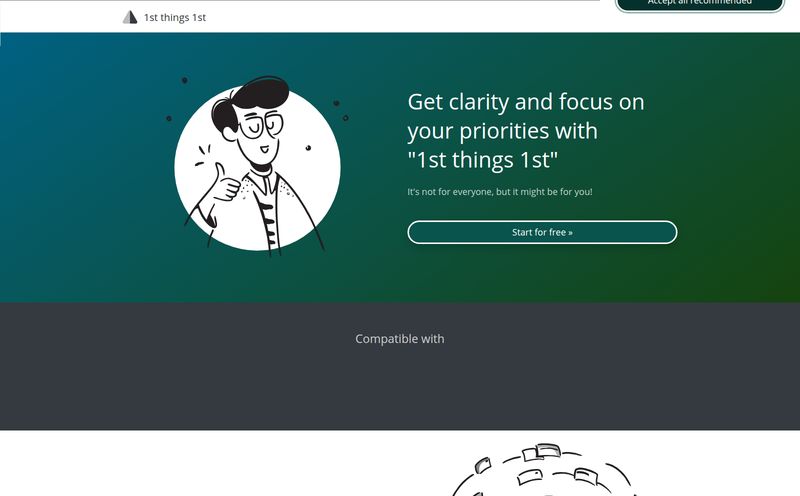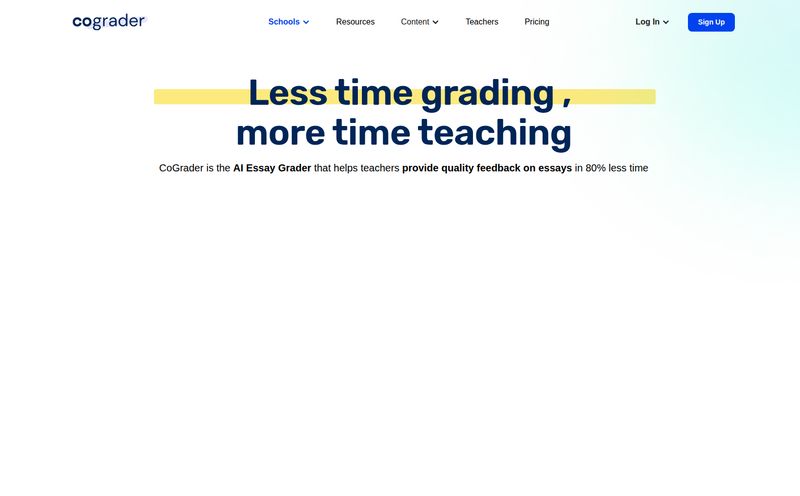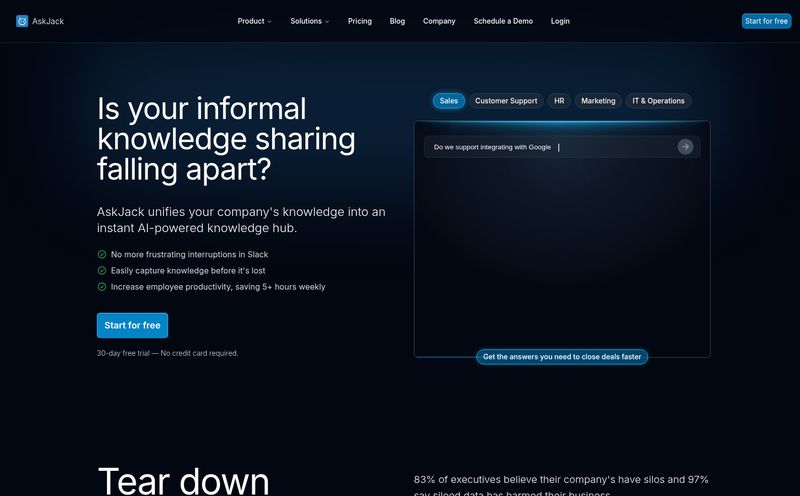I’ve spent more weekends than I care to admit wrestling with the plumbing of AI applications. You know the drill. You have a brilliant idea for a smart chatbot or an interactive guide, and suddenly you’re neck-deep in Python libraries, trying to get a vector database to talk to a Large Language Model without throwing a digital tantrum. It’s a rite of passage, I guess, but man, it can be a real drag on momentum.
So, when a tool like Farspeak pops up on my radar, claiming to simplify the whole mess, my first reaction is a healthy dose of professional skepticism. My second reaction? Cautious optimism. A platform that promises to handle the grunt work of Retrieval-Augmented Generation (RAG) and let you focus on creating? Sign me up for a test drive.
I’ve been poking around Farspeak for a bit now, and I’ve got some thoughts. Is it the magic bullet for all AI development woes? Probably not. But is it a genuinely useful tool that could save a lot of people a lot of time and headaches? Absolutely. Let’s get into it.
So What Exactly Is Farspeak?
Okay, let's cut through the marketing jargon. At its core, Farspeak is an API and a no-code platform designed to make building RAG applications much, much easier. If you’re not familiar with RAG, think of it like this: instead of just letting an AI like GPT-4 answer questions from its general, pre-existing knowledge, you give it a specific library to read from first. Your company's internal documents, a new product manual, a series of blog posts—whatever. The AI then uses that specific information to generate its answers. It's incredibly powerful for creating accurate, context-aware AI agents.
Farspeak acts as the middleman for this whole process. It provides the framework to connect your data (the 'library') to a powerful LLM, without you needing to manually configure a Pinecone or ChromaDB instance and write all the boilerplate code. It’s like the pre-made pizza dough of AI app development—you still get to add your own toppings and make it your own, but you get to skip the messy part of making the dough from scratch.
The Editor and AI Workflows in One Place
The first thing that strikes you when you log in is the interface. It’s clean. It feels less like a developer tool and more like a modern content editor, something like Notion or Medium. And that, I think, is the point. They’re trying to lower the barrier to entry, and they’ve done a pretty good job.

Visit Farspeak
A Familiar Feel for Content Creators
You can create projects, which are essentially containers for your content. Inside, you create pages. The editor itself is WYSIWYG, letting you format text, add images, and structure your content intuitively. For anyone who’s ever written a blog post or created a course online, you’ll feel right at home. This is huge, because it means the person with the knowledge doesn’t have to be a hardcore developer to get their information into the system. They can just... write.
The AI Agent Magic
But here’s the secret sauce. Once your content is in, you can start running AI agents against it. This is where Farspeak connects your beautifully structured pages to its RAG backend. You can create assistants that can answer questions about your project, run experiments to see how different prompts perform, and essentially build an interactive layer on top of your static content. This turns a simple FAQ into a conversational guide, or a dense course into an interactive learning experience. It's pretty slick.
Who Is This Actually For?
This is the big question with any new tool. I see a few key groups getting a ton of value out of Farspeak:
- Content Creators & Educators: Imagine turning your online course, ebook, or workshop series into an interactive platform where students can ask an AI tutor questions based only on your material. Game-changer.
- Startups & Small Businesses: Need a better customer support bot or an internal knowledge base that employees will actually use? Farspeak lets you spin one up in an afternoon, not a quarter.
- Developers & Agencies: For rapid prototyping, this is gold. You can build out a proof-of-concept for a client in a fraction of the time it would take to build from the ground up. It lets you test the idea before investing heavy engineering resources.
It's for the doers, the makers, the people who have an idea and want to see it come to life without getting bogged down in the technical weeds.
Let's Talk About Farspeak's Pricing
Price is always a factor, right? You can have the best tool in the world, but if it costs a fortune, it's a non-starter for most. Farspeak’s pricing seems pretty reasonable and scales logically. Here’s a quick breakdown based on their site:
| Plan | Price (per month) | Best For | Key Features |
|---|---|---|---|
| Free | $0 | Trying it out | 50 credits, 1 project, community support |
| Starter | $19 | Solo creators, small projects | 300 credits, up to 5 projects, 1 custom domain |
| Professional | $49 | Growing teams, businesses | 1,000 credits, up to 15 projects, up to 5 custom domains |
| Enterprise | $149+ | Large organizations | 3,000+ credits, unlimited projects & domains, dedicated support |
In my opinion, the Starter plan at $19/month is the sweet spot. It gives you enough rope to build something real and even hook it up to your own domain. The free plan is generous enough for a proper trial, which I always appreciate. No 24-hour-only nonsense.
The Good, The Bad, and The API-Dependent
No review is complete without a little tough love. While I’m pretty enthusiastic about Farspeak, it’s not perfect. Nothing is.
What I Liked (The Pros)
The speed is the main thing. The ability to go from a bunch of documents to a functioning, interactive AI agent in under an hour is just fantastic. It democratizes some pretty high-level tech. The platform also supports both structured and unstructured data, which gives it a lot of flexibility. The no-code editor is a massive win for bringing non-technical experts into the development process. It just works.
Potential Hurdles (The Cons)
First, while it simplifies RAG, it doesn’t eliminate the need to understand the concepts. You still need to think about how you structure your data for the best results. Garbage in, garbage out—the old rule still applies. Second, any no-code platform has its limits. If you need some wildly custom, deeply integrated feature, you might eventually hit a wall. That's the trade-off for speed and simplicity. Finally, you’re building on their platform. This means you’re dependent on Farspeak’s API and services. It’s a standard SaaS risk, but one you should always be aware of.
Frequently Asked Questions about Farspeak
Do I need to know how to code to use Farspeak?
For the most part, no. The no-code publishing platform is designed for anyone to use. However, if you want to interact with their API directly for more custom integrations, some coding knowledge would be beneficial.
What is RAG and why does it matter for Farspeak?
RAG stands for Retrieval-Augmented Generation. It’s the core technology that allows Farspeak to provide accurate, context-specific answers from your data, rather than the AI's generic knowledge. It’s what makes your AI agents smart about your specific topic.
Can I use my own domain with Farspeak?
Yes! The Starter, Professional, and Enterprise plans all allow you to connect one or more custom domains, so you can host your AI project on your own branded URL.
How do the "credits" in the pricing plan work?
Credits are typically used for the AI-powered operations, like generating responses from your agents. Think of them as the currency for using the 'smart' features of the platform. The free plan gives you 50 to get started.
Is Farspeak a good alternative to building a RAG app from scratch?
For most individuals and small teams, absolutely. It saves a huge amount of development time and cost. If you're a large enterprise with a dedicated AI team and very specific security or infrastructure requirements, a custom build might still be necessary, but for 90% of use cases, Farspeak is a fantastic alternative.
What kind of data can I use in my projects?
Farspeak is designed to handle both unstructured data (like text from articles, documents, etc.) and structured data. This flexibility means you can feed it a wide variety of information to build your knowledge base.
Final Thoughts: Is Farspeak Worth Your Time?
So, what’s the final verdict? I'm genuinely impressed. Farspeak isn't just another tool in the ever-growing AI toolbox; it’s a well-thought-out platform that solves a real, and often frustrating, problem. It successfully bridges the gap between content creation and advanced AI functionality.
It’s not going to replace entire AI development teams at Google, but it was never meant to. It’s for the rest of us—the marketers, the educators, the founders, and the creative developers who want to build cool things without getting lost in a sea of complexity. It empowers people to turn their knowledge into interactive experiences. And in my book, that’s a pretty big win.
If you’ve had an idea for an AI-powered project simmering on the back burner, I'd seriously recommend giving their free trial a spin. You might be surprised at how quickly you can bring it to life.



